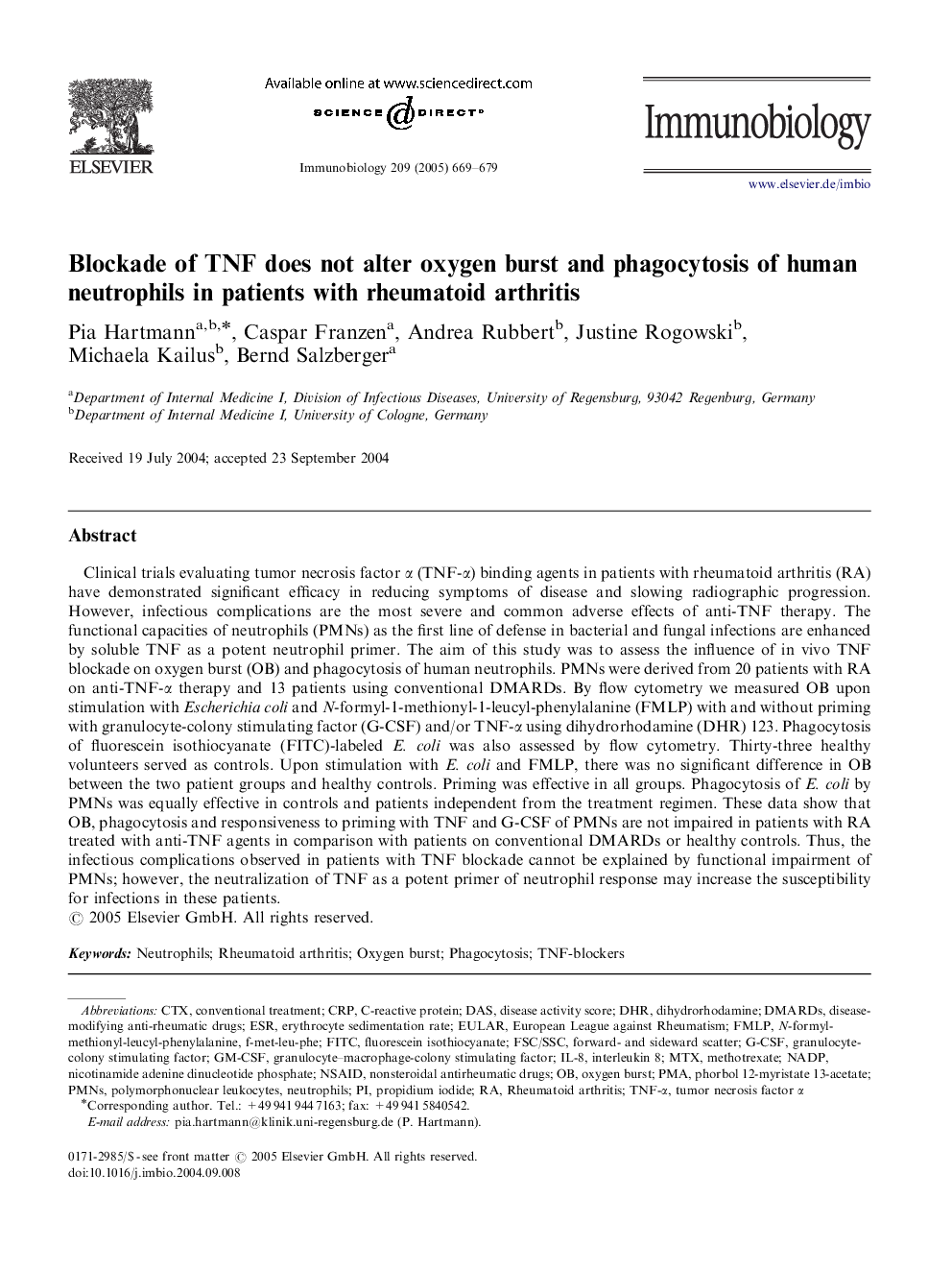| Article ID | Journal | Published Year | Pages | File Type |
|---|---|---|---|---|
| 10941175 | Immunobiology | 2005 | 11 Pages |
Abstract
Clinical trials evaluating tumor necrosis factor α (TNF-α) binding agents in patients with rheumatoid arthritis (RA) have demonstrated significant efficacy in reducing symptoms of disease and slowing radiographic progression. However, infectious complications are the most severe and common adverse effects of anti-TNF therapy. The functional capacities of neutrophils (PMNs) as the first line of defense in bacterial and fungal infections are enhanced by soluble TNF as a potent neutrophil primer. The aim of this study was to assess the influence of in vivo TNF blockade on oxygen burst (OB) and phagocytosis of human neutrophils. PMNs were derived from 20 patients with RA on anti-TNF-α therapy and 13 patients using conventional DMARDs. By flow cytometry we measured OB upon stimulation with Escherichia coli and N-formyl-1-methionyl-1-leucyl-phenylalanine (FMLP) with and without priming with granulocyte-colony stimulating factor (G-CSF) and/or TNF-α using dihydrorhodamine (DHR) 123. Phagocytosis of fluorescein isothiocyanate (FITC)-labeled E. coli was also assessed by flow cytometry. Thirty-three healthy volunteers served as controls. Upon stimulation with E. coli and FMLP, there was no significant difference in OB between the two patient groups and healthy controls. Priming was effective in all groups. Phagocytosis of E. coli by PMNs was equally effective in controls and patients independent from the treatment regimen. These data show that OB, phagocytosis and responsiveness to priming with TNF and G-CSF of PMNs are not impaired in patients with RA treated with anti-TNF agents in comparison with patients on conventional DMARDs or healthy controls. Thus, the infectious complications observed in patients with TNF blockade cannot be explained by functional impairment of PMNs; however, the neutralization of TNF as a potent primer of neutrophil response may increase the susceptibility for infections in these patients.
Keywords
FSC/SSCN-formyl-methionyl-leucyl-phenylalanineEULARfMLPDMARDsMTXIL-8DHRGM-CSFCTXf-Met-Leu-PheNSAIDDASNADPFITCESRgranulocyte–macrophage-colony stimulating factorInterleukin 8disease-modifying anti-rheumatic drugsConventional treatmentdihydrorhodamineerythrocyte sedimentation rateGranulocyte-colony stimulating factorG-CSFfluorescein isothiocyanateEuropean League Against RheumatismMethotrexateDisease activity scorenicotinamide adenine dinucleotide phosphateC-reactive proteinCRP
Related Topics
Life Sciences
Biochemistry, Genetics and Molecular Biology
Cell Biology
Authors
Pia Hartmann, Caspar Franzen, Andrea Rubbert, Justine Rogowski, Michaela Kailus, Bernd Salzberger,
